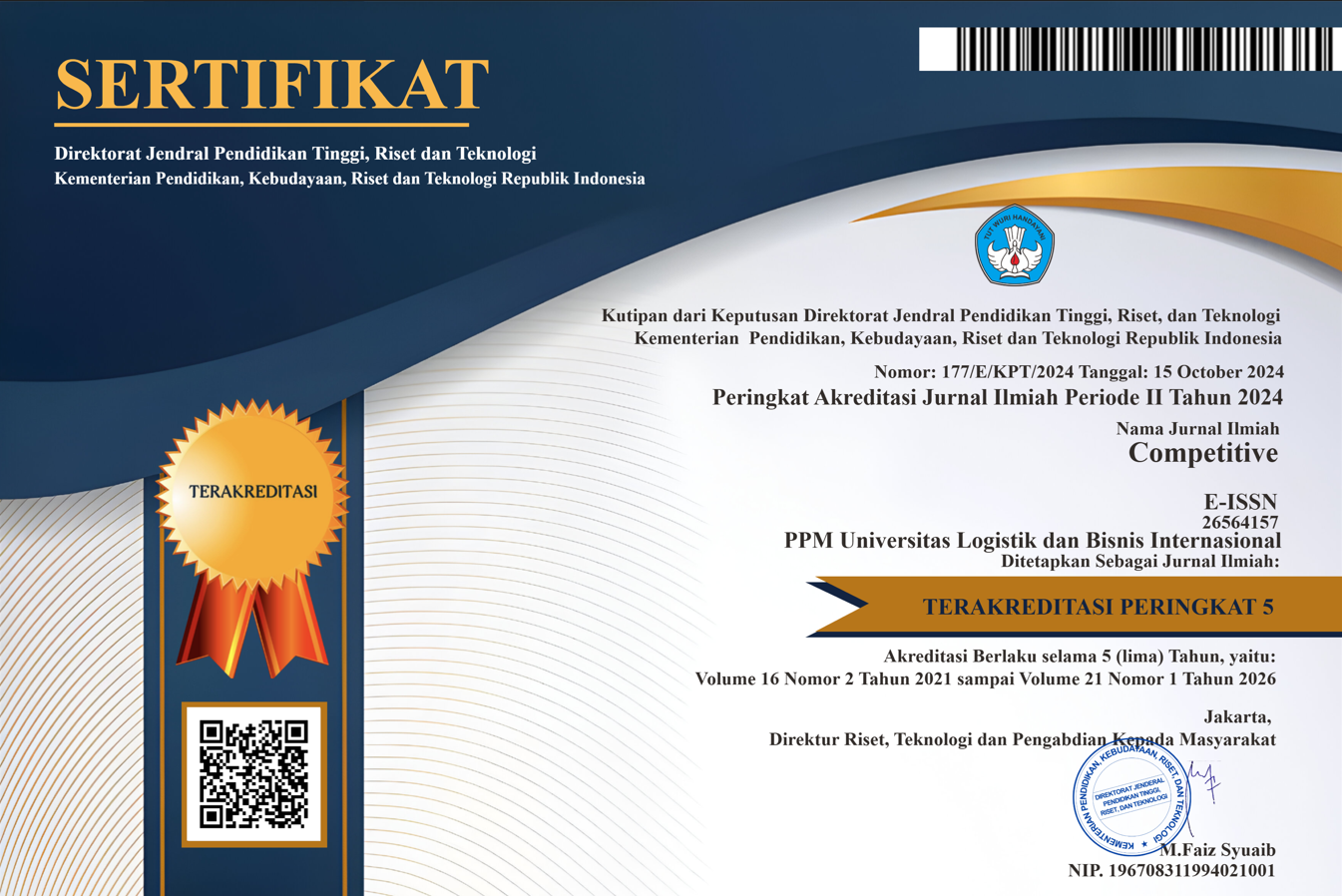ANALISIS BENTUK KESALAHAN PADA KALIMAT ILL-FORMED DAN EFEK KONTEKS PADA INFERENSI
ANALISIS BENTUK KESALAHAN PADA KALIMAT ILL-FORMED DAN EFEK KONTEKS PADA INFERENSI
DOI:
https://doi.org/10.36618/competitive.v13i1.344Keywords:
Ill-formed, misformation, konteks, inferensi, efek konteks.Abstract
Kalimat ill-formed atau kalimat yang tidak sesuai dengan tata bahasa acapkali muncul di dalam tuturan pembelajar Bahasa Inggris,khususnya tuturan mahasiswa di sebuah politeknik swasta Bandung.. Dari hasil penelitian ini didapati kesalahan pembelajar Bahasa Inggris berupa penghilangan (omission), penambahan (addition), dan kesalahan bentuk (misformation). Penelitian terhadap kesalahan kalimat Bahasa Inggris sudah sering di-publish, namun belum ada penelitian yang menyertakan efek konteks terhadap pemahaman kalimat berstruktur kalimat yang salah.Kesalahan kalimat dapat terjadi pada level semantik, morfologi, pragmatik atau sintaksis. Dari penelitian terungkap fakta kalimat Ill-formed yang masih dapat dimengerti adalah kalimat yang tidak ada morfem gramatikal serta efek konteks fisik, epistemis dan linguistik yang dapat membantu pemahaman tuturan ill-formed mahasiswa.
Dengan menggunakan tiga percakapan pembelajar dengan penutur Bahasa Inggris dari Jepang, Belanda dan Rusia penulis menganalisis efek konteks yang membantu inferensi pendengarnya. Kemunculan efek konteks yang membantu inferensi tuturan dari yang paling dominan adalah konteks fisik (64%) diikuti oleh konteks linguistik (29%) hingga efek konteks yang jarang muncul yaitu epistemis (7%).
Untuk bentuk ill-formed yang muncul terdapat misformation dengan prosentase 60% dari jumlah tuturan ill-formed (15 kali) sehingga percakapan berlangsung tidak efisien karena ada pengulangan. Sementara itu kesalahan penghilangan (8%) sebanyak 2 kali. Penyebab kealahan pembelajar yang signifikan adalah false concept hypothesized yaitu 27%.
Kata Kunci: Ill-formed, misformation, konteks, inferensi, efek konteks
Ill-formed sentences or sentences that are not in accordance with grammar often appear in the speech of English learners, especially the speech of students at a private polytechnic in Bandung. From the results of this study found the error of English learners in the form of omission, addition , and form errors (misformation). Research on English sentence errors has often been published, but no research has included context effects on sentence comprehension with the wrong sentence structure. Sentence errors can occur at semantic, morphological, pragmatic or syntactic levels. From the research revealed the facts of Ill-formed sentences that can still be understood are the sentences that have no grammatical morpheme and the effects of physical, epistemic and linguistic contexts that can help students understand ill-formed speech.
By using three conversation learners with English speakers from Japan, the Netherlands and Russia the author analyzes the context effects that help the audience's inference. The emergence of context effects that help speech inference from the most dominant is the physical context (64%) followed by the linguistic context (29%) to the rarely emergent context effects that are epistemic (7%).
For the ill-formed form that appears there is a misformation with a percentage of 60% of the amount of speech ill-formed (15 times) so that the conversation goes inefficient because there is a repetition. Meanwhile, omission errors (8%) twice. The significant cause of learning errors was a hypothesized false concept of 27%.









